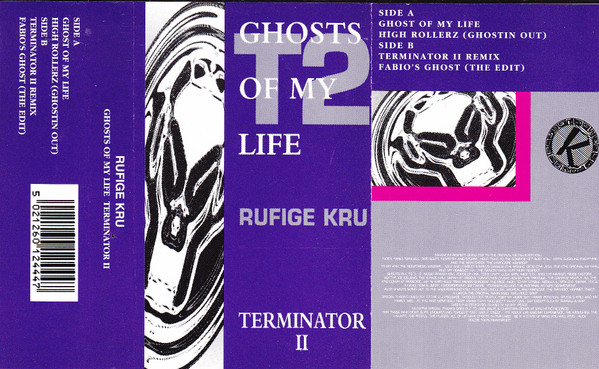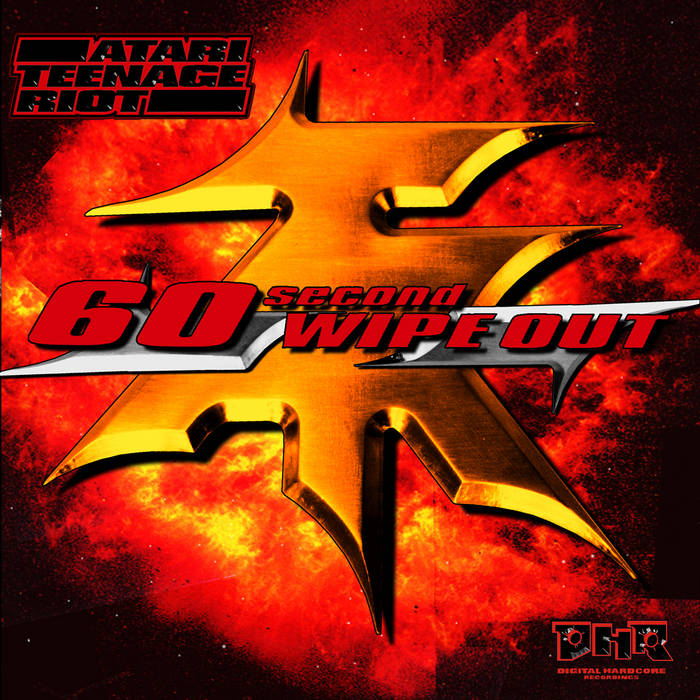Through that time machine also known as the Internet, the jungle music of Rufige Kru (AKA Goldie), DJ Crystl, and Kode9 returns to the present in the form of the electronic hardcore of Machine Girl, xX_gloom13_Xx, Golden Boy, and Goreshit. Breakcore music is back: heavier, faster, and even more hardcore.
Mark Fisher and Nick Land prefer the term jungle, rather than drum and bass, to refer to that subgenre of dance music which started to emerge in the United Kingdom in the late 1980s and early 1990s. As Mark Fisher argues:
“It is […] worth holding onto the name Jungle because it evokes a terrain: the urban Jungle, or rather the underside of a metropolis that was just in the process of being digitalised.”
Jungle’s theory and culture are characterised by quick tempos (from 160 to 180 BPM), breakbeats (sampled drum patterns often playing off-beat), and a plethora of science fiction references, for example, through samples of voice tracks from Alien, Blade Runner, and Terminator. The rhythm of jungle music is edited and time-stretched, so much so that sometimes it is nothing more than a high-frequency sound; thus, rhythm returns as the sign of tone and nothing else: time folds onto itself and plays with syncopation. The difference between time and sound is lost in the jungle. As Nick Land writes in an essay halfway between fiction and theory, “Strung out in xenofevers, jungle-war machinery forgets how to count.”

But jungle music is, moreover, the representation of the metropolis as a kind of urban jungle and cybercapitalist dystopia: populated by less-than-human creatures, cyborgs à la Terminator, and alien hunters like the Yautjas from the Predator franchise. Mark Fisher describes the relationship between the music genre and science fiction (from Alien to Terminator) in the first section of Ghosts of My Life:
“Jungle’s world was one in which entities — human as well as nonhuman — stalked each other for sport as well as for sustenance. Yet darkside Jungle [like Rufige Kru] was about the thrill of the chased, about the videogame euphoria-anxiety of eluding ruthless predators, as much as it was about the exhilaration of running prey to ground.”
Also, Mark Fisher adds:
“darkside Jungle projected the very future that capital can only disavow. Capital can never openly admit that it is a system based on inhuman rapacity; the Terminator can never remove its human mask. Jungle not only ripped the mask off, it actively identified with the inorganic circuitry beneath: hence the android/death’s head that Rufige Kru used as their logo. […] Annihilation becomes the condition of the radically new.”
However, the principles of short circuit and destruction, so paradigmatic of accelerationist philosophy, are not exclusive to jungle music, in whose respect Mark Fisher and Nick Land were both the patrons and the theoreticians.

At the same time as Rufige Kru’s jungle music, Alec Empire’s Atari Teenage Riot is in fact another part of the hardcore continuum (alongside hardcore techno, for example), further described by an anti-fascist ideology and heavily influenced by hardcore punk music from the 1980s (with guitar overdrive and savage screams). For instance, the lyrics of Fuck All! shout: “Cut all policemen into pieces! / Fuck all! Fuck all! / […] We disharmonize the entertainment industry! / Let’s destroy the future! From here! From now! / We are the resistance!”
After jungle music and the digital hardcore of Alec Empire, and more than two decades after the peak of popularity of both genres, hardcore returns in the form of the new breakcore music of Machine Girl and Goreshit. The lyrics of Machine Girl’s song Fuck Up Your Face: “Facial recognition pandemonium / Insulated for the cameras / […] It’s a million trolls and a million guns, / A trillion dead with their red eyes up. / All we have shown is the cellphones.”

To listen to Machine Girl is like playing a video game like Doom high on speed. After jungle music, the new breakcore music represents the metropolis of the future following its reupload to the Internet: again, another techno-cultural space populated by cyborg killers and alien hunter races, but also characters from shooter video games and Japanese anime culture. The sound is more extreme, louder, the rhythm is even more vertiginous. The music itself is often smuggled and spiced with another exciting sound: gabber, footwork, and noise music. Drugs are more and more redundant: the metabolism accelerates, the dopamine rush triggers pupil dilation, the nervous system is disconnected and reconnected — in analogy to what Mark Fisher already stated about jungle music.
In an interview, Robin Mackay, a student of Nick Land like Mark Fisher, describes jungle music as a “weird multitemporal hybrid entity dedicated to picking apart the body and disrupting it with polyrhythm and with bass.” Twenty years later, the new breakcore music follows the same project. Artists like Machine Girl, xX_gloom13_Xx, Golden Boy, and Goreshit are the sign of a future past: not the representation of a new future, but the return to a lost future which was already celebrated by the 1990s. The party ended too soon but it is never too late to have a little more fun.
*
The playlist “Breakcore 2.0” is available on Spotify: https://open.spotify.com/playlist/3mJQAuakloyXjiaqZQ21uI?si=qfe8hgMqQO-zfIn7QD8g-A
- Machine Girl (2014). Ginger Claps. WLFGRL.
- Machine Girl (2022). Bloody Sneakers (Violet’s Theme). Neon White (OST 1: The Wicked Heart & OST 2: The Burn That Cures).
- xX_gloom13_Xx (2020). hellevator.mp3. _baby_eviscerator_.
- Golden Boy (2020). Spirit Gun. Prince of the Cyber Rave.
- Kaizo Slumber (2022). Schlierberg. The Kaizo Manifesto.
- Goreshit (2018). R.g.industries. Nrrv6.
- Jawko (2021). GORE-TEX HEART. GORE-TEX HEART.
- Sewerslvt (2020). Cyberia lyr3. Cyberia lyr3.
- Vertigoaway (feat. rainsdeaf) (2022). yeonalsnov – rains cut. das epos hohlraum.
- 5ubaruu (2021). warmth from within. www .555.6.
Bonus track: The Garden (2020). Please, Fuck Off. Kiss My Super Bowl Ring.
Noteworthy breakcore artists that were not included in the playlist: DJ CAMGIRL, C!erra My$t, VRTLHVN, x.nte, bye2, TOKYOPILL, Windowshopping, NANORAY.
BIBLIOGRAPHY
Fisher, M. (2014). Ghosts of My Life: Writings on Depression, Hauntology and Lost Futures. London: Zer0 Books.
Land, N. (2013). Cyberspace Anarchitecture as Jungle-War. In R. Mackay & R. Brassier (Eds.), Fanged Noumena (pp. 401–410). Falmouth: Urbanomic.
Mackay, R. (2019). Towards a Transcendental Deduction of Jungle (Interview). Readthis.wtf.
Reynolds, R. (2013). The Hardcore Continuum. The Wire.
The original version of this article was published in the Italian magazine DROGA.
Alessandro Sbordoni is an Italian writer. He is an editor of Blue Labyrinths and the Italian magazine Charta Sporca. He lives and works in London.


great writeup, I love to see the inner workings of music brought up to the surface like this!
LikeLike